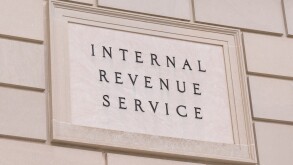Almost three years after the Tax Cuts and Jobs Act repealed Section 958(b)(4)’s limitation on downward attribution of ownership, recently promulgated regulations have been introduced to provide final rules that reverse some of the repeal’s presumably unintended consequences. The article summarises some major features of the final and proposed regulations published in September 2020.
Section 958(b) of the Internal Revenue Code provides constructive ownership rules used in the determination of whether a non-US corporation is a controlled foreign corporation (CFC) and whether a US person is a US shareholder. Since the repeal of Section 958(b)(4), a non-US corporation can be a CFC even if no US persons are ‘Section 958(a) US shareholders’, i.e. shareholders that own a 10% or greater equity interest in the corporation either directly or through a higher-tier entity in the same chain of ownership as the corporation. As determining whether a foreign corporation is a CFC requires information that may not be available to the foreign corporation or its shareholders, Rev. Proc. 2019-40 established safe harbours, which the regulations published in September 2020 neither modify nor displace.
The final regulations provide that certain rules, generally applicable to CFCs, are inapplicable and would not be CFCs without downward attribution (foreign-controlled CFCs). For example, the final regulations turn off the look-through rule for assigning dividends, interest, rents and royalties received from a CFC to a foreign tax credit limitation category under Section 904. Under the look-through rule, such income is classified as passive category income of the US shareholder only to the extent it is sourced from the passive category income of the CFC. US shareholders of foreign-controlled CFCs will no longer have the benefit of that rule for computing their foreign tax credit limitation.
In a favourable change for taxpayers, the regulations narrow the application of §267(a) to defer deductions for interest and royalties paid to foreign-controlled CFCs. Section 267(a)(3)(B)(i) generally denies deductions with respect to payments by a related party to a CFC until the year when the payment has been made or a 10% US shareholder of the CFC has an income inclusion attributable to the payment.
Treas. Reg. § 1.267(a)-3(c)(4) turns off the foregoing rule for foreign-controlled CFCs if the foreign-controlled CFC has no Section 958(a) US shareholder. In a further taxpayer-friendly change from the October 2019 proposed regulations, this exception to the CFC payee rule applies to all payments, including interest payments. Note that other limitations on the deductibility of interest, such as those found in Section 163(j), continue to apply. Furthermore, all CFCs remain ineligible for the portfolio interest exception with respect to interest received from a related person. The preamble to the final regulations asserts that Treasury lacks regulatory authority to exempt foreign-controlled CFCs from this rule.
One important proposed regulation was not finalised but can still be relied upon. That proposed regulation would provide taxpayers relief by treating fewer foreign-controlled CFCs as passive foreign investment companies (PFICs) with respect to US persons that own less than 10% of the foreign-controlled CFC’s stock. A foreign corporation generally is a PFIC if 75% or more of its gross income for the taxable year is passive income, or 50% or more of its assets produce, or are held to produce, passive income. Whether a corporation’s assets make it a PFIC often depends on how the assets are measured.
A fair market value approach is more taxpayer-friendly because a taxpayer usually can count self-created intangible property as active assets, whereas measuring assets by the corporation’s basis in the assets gives the corporation no credit for its self-created intangibles. The proposed regulation would exempt foreign-controlled CFCs from the requirement that CFCs, when testing for PFIC status, must measure their assets with respect to their basis. Finalisation of that regulation has been deferred until finalisation of other PFIC-related regulations.
The final 958(b) regulations generally apply retroactively, either beginning on October 1 2019, or, at the election of the taxpayer, to the last taxable year of a foreign corporation beginning before January 1 2018, and each subsequent taxable year. If the taxpayer elects to apply the final regulations before October 1 2019, the taxpayer and US persons that are related to the taxpayer must consistently apply the relevant rule with respect to all foreign corporations.
Proposed regulations published concurrently with the final regulations would deny application of the look-through rule of Section 954(c)(6) to payments made by foreign-controlled CFCs. If finalised, the regulation would not exempt dividends, rents, or royalties received from subpart F income merely because they were sourced from non-subpart F income of a foreign-controlled CFC.
Further, for Section 367(a) purposes, the proposed regulations would generally disregard downward attribution for the purpose of determining whether an outbound transfer of stock or securities of a domestic corporation can receive non-recognition treatment. The lone exception is that downward attribution would continue to apply when determining whether a shareholder is a 5% transferee shareholder and thus required to enter into a gain recognition agreement.
William Skinner
T: +1 650 335 7669
Mike Knobler
T: +1 650 335 7717













